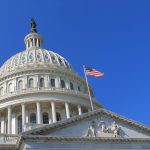Published September 8, 2014
Obamacare’s defenders are busy declaring victory again. Ezra Klein is touting a new survey of Obamacare benchmark premiums in some regions of the country as evidence that the law is defying the predictions of critics and working to cut costs rather than increase them.
But, as Bob Laszewski notes, the truth about Obamacare implementation is far less rosy than the latest round of cheerleading would indicate.
For starters, the federal and state websites remain largely a dysfunctional mess, although the media isn’t really covering the story anymore. The supposed “fix” that allowed millions of consumers to sign up with plans on the exchanges from December through April really wasn’t much of a fix after all. It was a workaround, allowing consumers to access large federal subsidies with minimal verification.
It turns out to be pretty easy to sign up millions of beneficiaries for federal assistance online if the government isn’t interested in making sure the payments are accurate. The quite predictable consequence of using unverified information to provide federal assistance is that millions of the supposed signups are by people who are either ineligible because they are not in the country legally, or are being paid the wrong subsidy amounts because their actual household income (based on government data) is different from what they reported. In Florida alone, nearly 100,000 people may soon be kicked off of their health insurance plan because they lack proof of legal status. Millions more may be forced to pay back large subsidy payments when they file their income taxes next year.
Further, the so-called “back-end” of the website still hasn’t been built, and there’s no sign it will be in time for the second open enrollment period, which begins November 15. The back-end is the part of the application process that is supposed to automatically send verified subsidy payments from the U.S. treasury to the insurance plans that are signing up new customers on the exchanges. The whole point of the online enrollment system is to establish an integrated eligibility and payment system that minimizes errors and wasted taxpayer funds. But because it is still not working, the government has been relying on yet another “honor system” to make the actual payments. The insurers are submitting monthly invoices to the federal government of the total subsidy amounts they think they are owed, and the Obama administration is writing them checks based on the invoices. For those who might worry about giving the for-profit health insurance industry a direct pipeline into the U.S. treasury, the administration says not to worry. It will all be reconciled later with actual, verified enrollment data, whenever the data becomes available from the still unbuilt “back-end.” What could possibly go wrong?
Enrollment in Obamacare plans has also been steadily declining since April because some of those who signed up during open enrollment have since dropped their coverage or stopped paying their premiums.Aetna expects that about 30 percent of those who signed up for coverage from the company under Obamacare during the first open enrollment will drop out of the plans they selected by the end of the year. The implication is that there will be far fewer than the much-touted “8 million” still enrolled in Obamacare plans when December rolls around.
As Laszewski also points out, the premium survey that Klein cites, conducted by researchers for the Kaiser Family Foundation, is only a partial survey, covering just 16 metropolitan areas, so it is far from a conclusive look at nationwide trends. Moreover, it doesn’t really tell us anything about premium trends because they plans it examined are not weighted by enrollment. The government uses the second-lowest premium silver plan to establish federal subsidy payments in various markets and regions of the country, regardless of how small enrollment in that plan might be. Kaiser looked at the second-lowest silver plans in these regions and concluded that the premiums for these plans in 2015 are, on average, slightly below the second-lowest silver plan bids in 2014.
The method for calculating the government’s subsidy is very different in Obamacare compared to the Medicare prescription drug benefit. The 2003 law creating the Medicare drug benefit set the government contribution in each region based on the average premium from all of the bidders, weighted by their current enrollment. This has the effect of stabilizing premiums by giving more emphasis to the bids from the largest and most viable plans.
Using the unweighted second lowest bid to set the federal subsidy in each of the Obamacare markets allows insurers with very low enrollment to shake things up with kamikaze bids. Obamacare further encourages this kind of business strategy by promising to bail out any plan that loses money above a certain threshold (the so-called “risk corridor” provision). So, if you are an insurance plan that is having trouble breaking into a market, what’s there to lose from submitting a very low bid in order to garner more market share? Sure, you will lose a lot of money on every customer, but federal taxpayers will bail you out for most of it. And, with more enrollment from a low bid, you might have greater political leverage to keep the taxpayer support flowing in future years.
It is quite possible that this is the dynamic playing out in the Kaiser premium survey. In 12 of the 16 cities examined, one of the two low-cost silver plans in 2014 is no longer one of the two lowest bidders in 2015. Consequently, the enrollees in these plans could experience higher premium increases than Klein cites because their insurers are losing so much money in the first year that they had to raise premiums substantially in year two, or because the federal subsidy for the plan has fallen due to a kamikaze bid from a competing insurer becomes the new second-lowest silver plan.
Some of the low-bid plans in 2015 may also be utilizing very narrow network physician panels, which would have the effect of forcing many lower income consumers to drop their doctors if they want to stay with the lowest priced plan in a region. That may not be an option for many patients with chronic health conditions for which they already have selected a trusted physician.
So, to get a true picture of what is happening to premiums, it is important to look at what is happening to the premiums charged by plans with sizeable current enrollment, not just the premiums from the upcoming year’s low bidders.
There is one very important takeaway from the Kaiser survey for GOP opponents of Obamacare in the House and Senate: they should make repeal of the risk corridor provision among their highest legislative priorities. As Laszewski’s note makes clear, it is one of the most important features of the entire law. Insurance companies are making their bids for 2015 explicitly on the assumption that any losses (quite predictable in some cases) will be covered by federal taxpayers. That’s a fundamental distortion of the marketplace that protects for-profit companies from the consequences of their actions.
Fighting for repeal of the risk corridor provision is also a sure political winner. Who wants to be on the side of bailing out massive, for-profit insurance companies? The saying goes that good policy makes for good politics. That may or may not be true in all cases. It certainly is in this one.
James C. Capretta is a senior fellow at the Ethics and Public Policy Center and a visiting fellow at the American Enterprise Institute.








